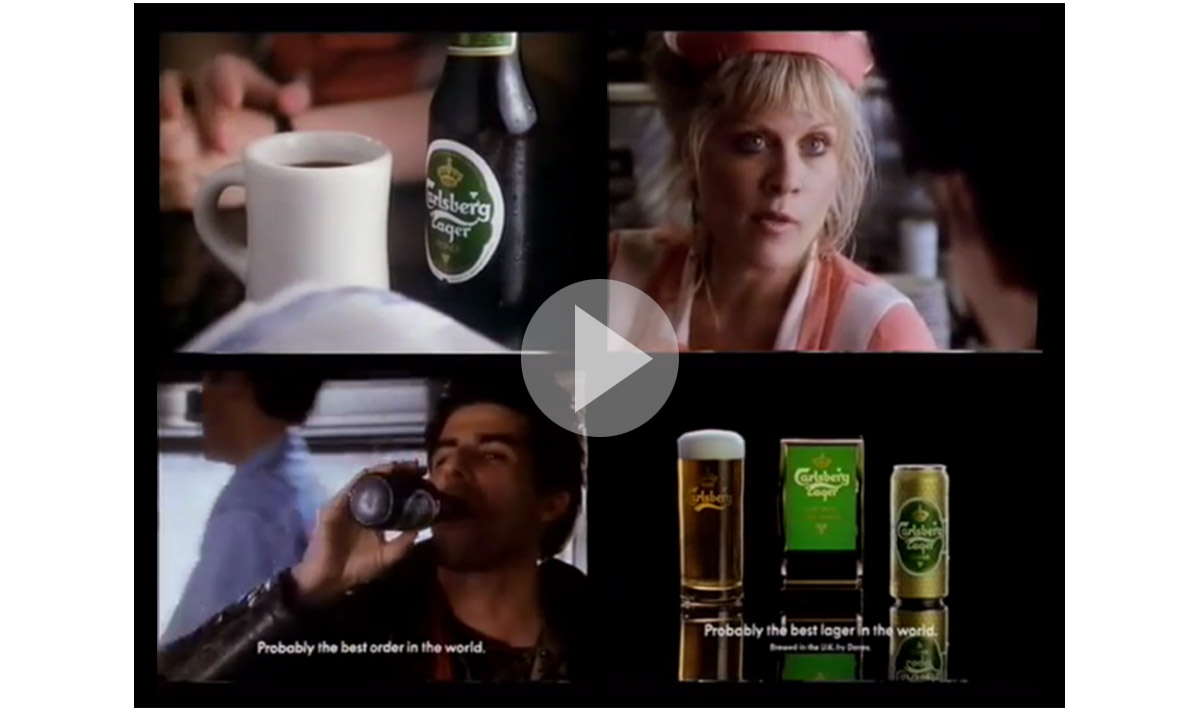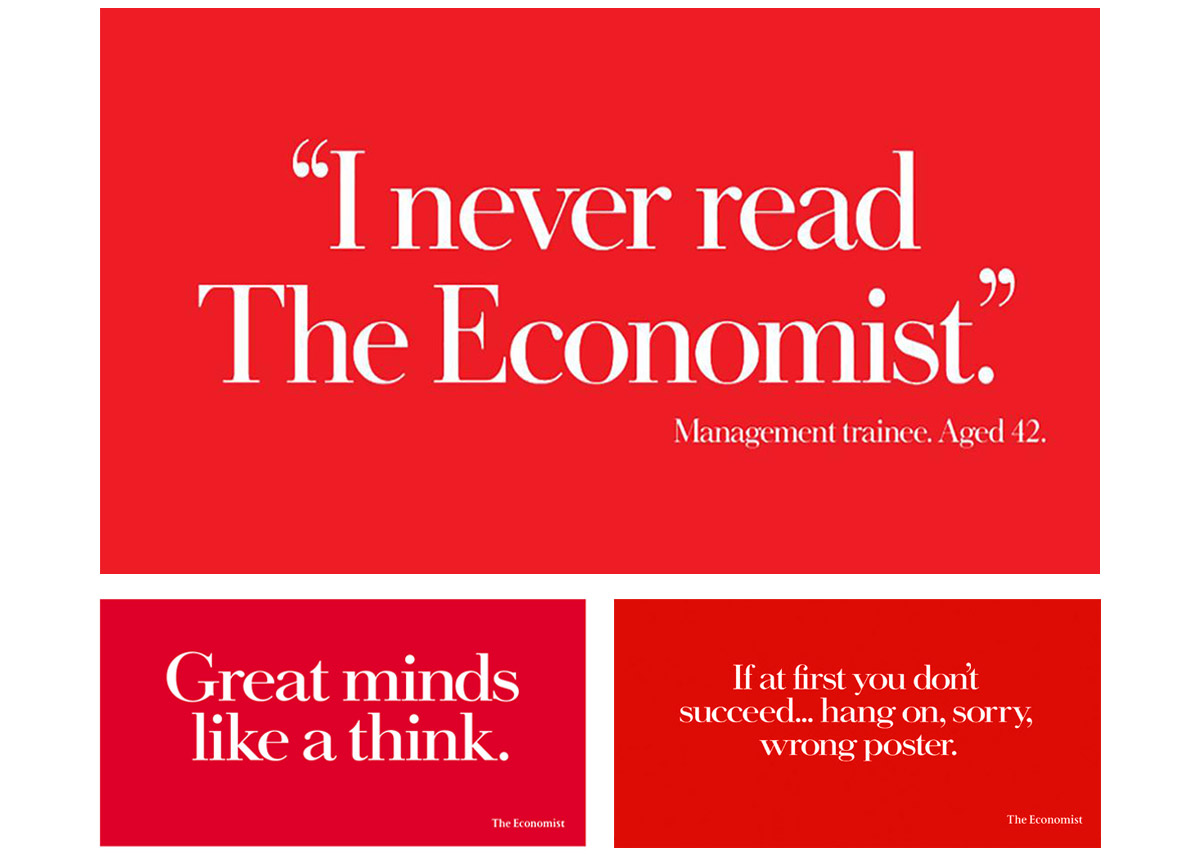Probing the creative mind #10 Jim Archer
The tenth in a series of posts pinching the rosy cheeks of creative types. Copywriters, Art Directors, Creative Directors, Graphic Designers, Photographers, Illustrators; they’re an odd, mysterious bunch – or are they? Introducing freelance copywriter, Jim Archer.
Hi Jim, let’s kick off with what you do to keep the wolf from the door.
As a freelancer, you’re always aware of the hot breath and bared fangs of Canis lupus lupus on the other side of the woodwork. Real or imagined.
Currently I work for a small coterie of agencies when they need an extra pair of hands or a pitch is in the offing.
I’m pleased to say that recently I was instrumental in landing a large chunk of additional drinks business for a shopper marketing outfit and an influential health awareness incentive for a healthcare agency.
But as an independent, I’m always up for other opportunities. You can reach me on 07710 439 497.
So, what first got you into advertising?
I started work as a messenger at Ogilvy & Mather at the tender age of 16; this was when David Ogilvy was still at the helm and long before Martin Sorrell had got his accountant’s mitts on the place.
How did you transition to the creative department?
I was recommended to join another agency as their print production guy.
It was a small outfit and, along with my production duties, I was drafted in to draw up stuff when the CD/Art Director was away; and at that time, they used to use freelance writers, as and when.
Anyway, I started to put my own headlines onto what I was drawing-up. It soon dawned on the management that they were saving on fees. Plus, my headlines were often better, as well as cheaper! This carried on and then I realised that I was doing two jobs for the price of one.
So, I gave them an ultimatum, they either put me in the creative department proper, or double my salary. Not only did they make me an official writer, though junior, they hired me an Art Director to boot.
David Holmes was now the CD and partner at the agency (Holmes Knight Ritchie) and they partnered me with an Art Director who came down from the Midlands to work in London. This was Stuart Newman, who proved to be a good mentor to my gauche young self.
Do you feel that not having a formal creative education was a disadvantage?
I regret not having the art school experience. The freedom, the hedonism and the whole experimentation thing. But, can you teach people to have ideas?
I just seemed to have a knack of being able to do the job when I started out – and I believe that experience is the best education.
Who in the early days showed you the ropes?
Stuart (Newman) was instrumental in helping me realise the subtleties of communication. I made plenty of mistakes though, thinking I could run before I could walk.
You must realise, I hadn’t been to art college or Watford, which had an excellent copywriting course back then.
I was completely raw and untutored.
Adrian Holmes (no relation to David) was a young freelancer who used to pop in for the odd job and he gave me lots of practical tips about writing copy. It was he that told me to read and absorb D&AD annuals – this was the best tip or rope-show ever.
I might add that I received lots of help and encouragement from a good many account people who brokered my transitions and promotions.
Who else have you worked with who has influenced you?
The only other significant creative to have any real direct impact on me was Andy Reagan who I met at Hicklin Slade. You could throw any idea at him, no matter how left field, and he’d try and find a way to make it work.
He leaves no stone unturned, and his energy is incredible.
We’re great mates and still work together whenever the opportunity arises.
Which creatives do you particularly admire?
The people that I have admired are probably best summed up as old-school (not skool). David Abbott, Dave Trott, Tony Brignull and Tim Delaney.
From a time when you had the opportunity to build a story and weave a tale about and around a product.
Naturally, most of these guys had their names above the door for very good reasons.
Digital and data has had such a massive impact on communications and how it is served-up today, that the pure writer’s ability to shine is much diminished.
But this is now manifesting itself in blogs where the reader takes time out to consume the content. I can’t bring myself to use the term story-telling I’m afraid.
Which agencies are producing the best work at the moment?
Mother and Adam & Eve.
Mind you, some great work is being produced direct; I’m thinking Specsavers and Channel 4 here.
What skills and attributes do you need to survive in this business?
Be relevant. Be useful. Be on brief. Be up to speed. Stay curious.
What’s your go-to starting point to get the creative process moving?
Ah, the million-dollar question, with a million different answers.
For me. Read the brief, interrogate the product – though it’s more likely to be a service these days.
Then, if you’ve the luxury of time, let it marinate in your subconscious.
If you’ve no time whatsoever, it comes down to craft skills and muscle memory.
Tell me one thing you’ve learned that you’d like to pass on to other creatives.
Remember, you’re replaceable. So, do your best. Always.
Tell me about the best and worst shoots you’ve been on.
The best. A week spent in Antigua on a photoshoot for a poster for AA Travel. There was only one flight in, and one flight out, both a week apart. We kept referring to the trip as a holiday by fruedian slip which made the photographer furious.
The worst. We had to cast a 14-year old teenager for Johnson & Johnson, after finding the perfect girl who had all the presence, personality and grace required, the client went against our advice and overruled us. We ended up with a girl who looked at least 27 and was wooden. The resulting film was a disaster, natch.
What one thing would make your job easier or better?
Just the one thing? Experienced clients.
What’s your favourite piece of work you’ve been responsible for?
A TV spot for Carlsberg. It was bang on brief and I got to shoot it in New York.
Man walks into a diner and asks for a coffee and a Danish, so naturally the waitress serves him up a coffee and a Carlsberg lager.

What three pieces of work do you wish were in your portfolio?
That’s a toughie. But I’ll take three of those great blood red Economist posters any day of the week.

What ingredients make up the ideal client?
One that appreciates that you are on their side and you’re trying to do some work that will help increase or better their business.
One that gives you the time and space to explore options.
One that pays on time.
You’ve been a CD and a copywriter. Which for you is the most satisfying?
Hard to say. It all depends where you are and what you’re doing at that precise moment. I reckon you have to make the most of whatever you’re doing, wherever that may be.
Being a CD has been absolutely wonderful – it’s also been a pain.
As David Abbott once said: “Give me the freedom of a tight brief.” I believe that’s the best place to be.
If you were stranded on a desert island, what 3 things would you have to have?
The BBC, The NHS and the complete works of Shakespeare.
If you weren’t a Copywriter now, what would you be?
Ah, the fantasy question. So, I’ll give you my fantasy answer.
If I couldn’t own and manage a vineyard somewhere, I’d love to be a wealthy art collector.
What question do you wish I’d asked?
You: “Jim, would you like this 3-day week, £100k a year job?” Me: “Yes.”
Thanks Jim, sorry I can’t offer you a 3-day week, but the next drink’s on me. Cheers.
Check out Jim’s website
Connect with Jim on LinkedIn
Read the last creative interview here:
Writer: Ed Pritchard